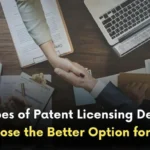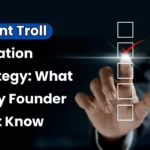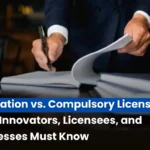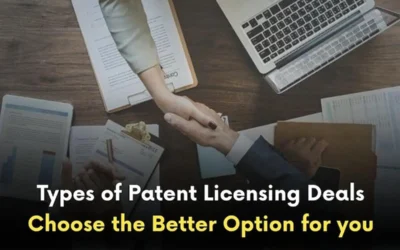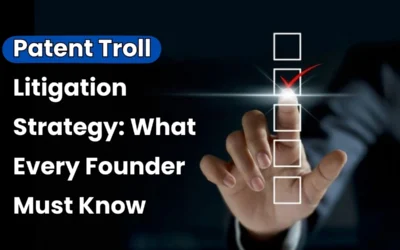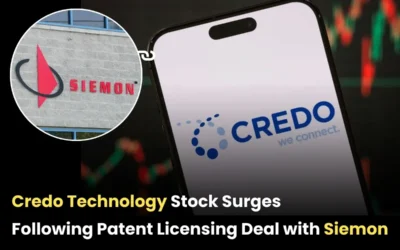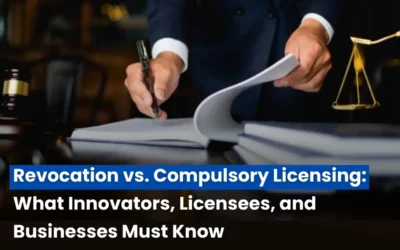
Are you confused about how to Monetize Your Patent?, Let’s know about it. The process of securing a patent right for investors is not easy—it is often lengthy, complex, and full of hurdles. Throughout this journey, investors not only navigate legal and technical challenges but also commit significant financial resources, making it a costly and demanding endeavor. So, it is only natural that when investors finally secure patent rights, they expect a return for all the effort, time, and money they have invested in the process. However, if you think monetizing a patent is easy, think again. Recent research has revealed that most patent holders end up with underutilized or untouched patents, which turn into wasted opportunities and financial losses for investors. If you are one of those holding such patents, we are here to help. In the following sections, we will walk you through every step of the process and highlight the most suitable strategies for different kinds of ideas—so keep reading.
What are these ways that the patent turns into money?
We will focus mainly on 6 effective ways to generate money from patents, while also exploring which approach is best suited for patent holders based on their specific needs and circumstances.
Licensing Agreements
Licensing agreements protect both the licensor and the licensee by setting clear rules for intellectual property use
They include provisions/elements on:
- Proceedings against third parties
- Actions for infringement or disputes
- Legal remedies
This option is best for patent holders who want to generate a reliable stream of income without directly getting involved in the challenges of manufacturing, marketing, or distribution.
Sell/Transfer the Patent Outright
Selling a patent involves transferring full ownership for an upfront payment, ideal if you want immediate returns. Suited for those who prefer quick cash flow or lack resources to commercialize. This requires drafting an agreement that includes details of both parties, the agreed-upon terms, and the sale price. Once signed, the document must be officially recorded with the patent office—either electronically or by mail—along with the applicable fee, making the transfer legally valid. This method is particularly suited for those who seek immediate financial returns rather than ongoing royalty income. This method is more suitable for the inventors or investors who want quick cash or cannot commit resources to commercialization, and less suitable for those who prefer to retain control of their invention and benefit from long-term earnings.
Patent Pools or Auctions
Patent pools and auctions are best suited for technologies with overlapping rights, such as telecom, electronics, and software, where collaboration can create greater value and reduce conflicts. However, they are less suitable for standalone inventions or patents with limited demand, as these may not attract enough interest from bidders or pooling partners.
Enforce Your Patent Rights
Enforcing your patent is crucial when others infringe upon it. By taking action through legal channels, patent holders can protect their market share, stop unauthorized use, and seek compensation for damages. This approach is most appropriate for those actively facing infringement and determined to defend the value of their innovation, but less suitable for inventors who lack the resources or willingness to engage in the process.
Partner with Investors or Businesses
Partnering with companies or venture capitalists allows inventors to commercialize their patents with the support of additional funding, expertise, and market access. This option is ideal for innovators who have promising ideas but lack the financial resources, infrastructure, or industry connections to bring their invention to market on their own. However, it may be less suitable for those who prefer to maintain full control over their intellectual property and business direction.
Commercialize It Yourself
Commercializing your patent yourself means building a business around it, giving you complete control over production, marketing, and revenue. This path is best suited for entrepreneurs who are willing to invest significant time, money, and effort to grow their invention into a sustainable venture. However, it may not be ideal for those who lack the necessary capital, resources, or risk appetite to manage the full responsibilities of running a business.
Conclusion
Turning a patent into profit requires choosing the right monetization strategy based on your resources, goals, and long-term vision. Options such as licensing, selling, pooling, enforcement, partnerships, or self-commercialization each come with unique advantages and challenges. While licensing and partnerships can provide steady income with less risk, selling offers quick returns, and self-commercialization gives full control but demands greater investment.
